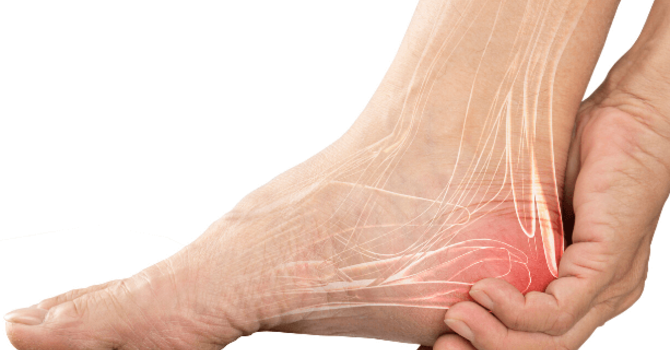
Knee pain is a common issue affecting athletes and individuals with arthritis, often resulting from ligament injuries or degenerative conditions like osteoarthritis. Effective management of knee pain requires a comprehensive biomechanical assessment and a tailored physiotherapy treatment plan.
Pathophysiology of Ligament Injuries
Ligament injuries, such as tears to the anterior cruciate ligament (ACL), posterior cruciate ligament (PCL), medial collateral ligament (MCL), and lateral collateral ligament (LCL), are prevalent in athletes and can lead to significant knee pain and dysfunction. Understanding the pathophysiology of these injuries is crucial for effective treatment:
1. Anterior Cruciate Ligament (ACL) Injuries: The ACL is crucial for stabilizing the knee during rotational movements. ACL injuries often occur due to sudden stops, jumps, or changes in direction. According to a study in the Journal of Orthopaedic Research, ACL injuries can lead to joint instability, altered biomechanics, and increased risk of osteoarthritis .
2. Posterior Cruciate Ligament (PCL) Injuries: The PCL prevents the tibia from moving backward relative to the femur. PCL injuries typically result from direct impact to the front of the knee, such as during a car accident or a fall. Research published in the American Journal of Sports Medicine indicates that untreated PCL injuries can result in chronic pain and instability .
3. Medial Collateral Ligament (MCL) Injuries: The MCL provides stability to the inner knee. Injuries to the MCL often occur due to direct blows to the outer knee, causing the knee to bend inward. A study in the Clinical Journal of Sport Medicine found that MCL injuries are common in contact sports and can result in significant pain and loss of function .
4. Lateral Collateral Ligament (LCL) Injuries: The LCL stabilizes the outer knee. LCL injuries are less common but can occur due to trauma to the inner knee, forcing the knee outward. The Journal of Athletic Training highlights that LCL injuries can lead to joint instability and difficulty with lateral movements .
Biomechanical Assessment
A detailed biomechanical assessment is crucial for accurately diagnosing the underlying causes of knee pain and developing an effective treatment strategy. Key components of this assessment include:
1. Gait Analysis: Observing the patient's walking and running patterns to identify any abnormalities that may contribute to knee pain. For athletes, this can highlight issues like overpronation or improper landing mechanics. According to a study published in the Journal of Orthopaedic & Sports Physical Therapy, gait analysis can help pinpoint specific biomechanical issues affecting the knee .
2. Joint Alignment and Structure: Assessing the alignment of the knee joint and evaluating for any structural abnormalities. Research in the Journal of Orthopaedic Research highlights the importance of knee alignment in understanding the biomechanical factors contributing to knee pain, especially in athletes and arthritis patients .
3. Range of Motion (ROM) Testing: Measuring the flexibility and movement of the knee joint. Limited ROM can exacerbate knee pain and restrict function. A study in the Clinical Journal of Sport Medicine found that restricted knee ROM is a significant risk factor for knee pain in athletes .
4. Strength Testing: Evaluating the strength of the muscles around the knee, including the quadriceps, hamstrings, and calf muscles. Weakness in these muscles can lead to imbalances and increased stress on the knee joint.
5. Palpation: Physically examining the knee to identify areas of tenderness, swelling, or inflammation. This helps in differentiating between various causes of knee pain, such as ligament injuries, patellar tendinitis, or bursitis.
6. Functional Tests: Conducting activities that mimic daily movements and sports-specific actions to observe how the knee functions under stress. Functional testing provides insights into activities that may aggravate knee pain, especially in athletes.
Treatment Options
Treatment for knee pain, particularly from ligament injuries, often involves a combination of approaches aimed at relieving pain, reducing inflammation, and correcting biomechanical issues. Key components of a physiotherapy-based treatment plan include:
1. Manual Therapy
- Soft Tissue Mobilization: Techniques such as massage can help reduce tension in the muscles and tissues around the knee. A systematic review in the Journal of Orthopaedic & Sports Physical Therapy supports the use of manual therapy for pain relief and functional improvement in patients with knee pain, including athletes and arthritis sufferers .
- Joint Mobilization: Ensuring proper joint mechanics can alleviate stress on the knee and improve movement.
2. Stretching Exercises
- Quadriceps and Hamstring Stretchin: Stretching the muscles around the knee can alleviate tension and improve flexibility. A randomized controlled trial published in the American Journal of Sports Medicine found that stretching exercises are effective in reducing knee pain, particularly in athletes .
- Calf Stretching: Tight calf muscles can impact knee mechanics. Stretching the gastrocnemius and soleus muscles can help.
3. Strengthening Exercises
- Quadriceps Strengthening: Strengthening the quadriceps is crucial for knee stability and function. The Journal of Athletic Training highlights the importance of quadriceps strengthening in managing knee pain, especially for athletes and those with arthritis .
- Hamstring and Glute Strengthening: Strengthening these muscles can improve overall lower limb mechanics and reduce stress on the knee.
4. Orthotics and Bracing
-Knee Braces: Providing support to the knee joint can help alleviate pain and improve function. A meta-analysis in BMC Musculoskeletal Disorders found that knee braces significantly improve pain and function in patients with knee osteoarthritis .
- Custom Insoles: Orthotics can help correct foot and lower limb alignment, reducing stress on the knee joint.
5. Modalities
- Ultrasound Therapy: Can reduce inflammation and promote tissue healing. A study in the *Archives of Physical Medicine and Rehabilitation* showed that ultrasound therapy can be beneficial in managing knee pain .
- Electrotherapy: The use of electrical stimulation to reduce pain and promote muscle activation.
6. Education and Activity Modification
-Proper Footwear: Wearing supportive shoes with adequate cushioning can prevent excessive strain on the knee. A review in the Foot & Ankle Specialist emphasizes the role of appropriate footwear in preventing and managing knee pain .
- Activity Modification: Advising patients on how to modify their activities to reduce stress on the knee, such as avoiding high-impact sports or prolonged standing.
Evidence-Based Practices
According to a review published in PubMed, a combination of strengthening exercises, stretching exercises, and manual therapy is effective in managing knee pain. Additionally, a Quora discussion highlighted the importance of addressing biomechanical issues through a comprehensive physiotherapy program to achieve long-term relief from knee pain.
A systematic review in the Journal of Orthopaedic & Sports Physical Therapy supports the efficacy of manual therapy, stretching, and strengthening exercises in the treatment of knee pain. The study found that these interventions, when combined, lead to significant improvements in pain and function.
Conclusion
Knee pain, whether from sports injuries or arthritis, can significantly impact an individual's quality of life. However, with a detailed biomechanical assessment and a tailored physiotherapy treatment plan, effective management and relief are achievable. Combining manual therapy, stretching and strengthening exercises, orthotics, and patient education ensures a holistic approach to treating this common condition.
It is crucial to seek an assessment from a qualified physiotherapist to accurately diagnose and treat knee pain. For personalized care, consider booking an appointment with a dedicated registered physiotherapist at West Calgary Physio & Massage Book now.
References
1. Journal of Orthopaedic & Sports Physical Therapy
2. Journal of Orthopaedic Research
3. Clinical Journal of Sport Medicine
4. Journal of Orthopaedic & Sports Physical Therapy
5. American Journal of Sports Medicine
6. Journal of Athletic Training
7. BMC Musculoskeletal Disorders
8. Archives of Physical Medicine and Rehabilitation
9. Foot & Ankle Specialist
10. Journal of Orthopaedic & Sports Physical Therapy.

Taffy Zambuko
Contact Me



